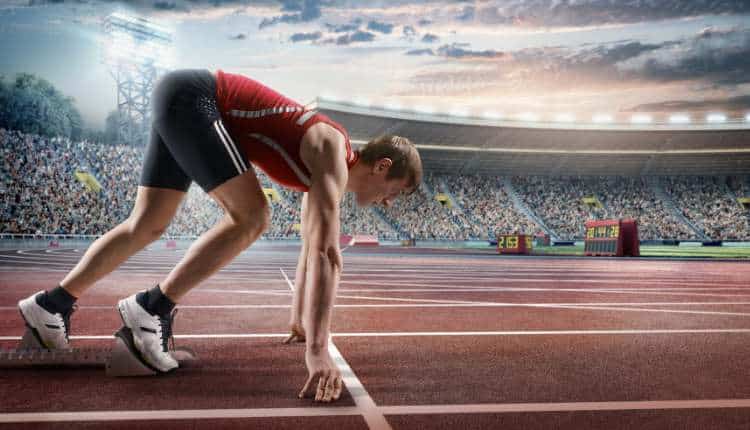
Creative visualization has become a powerful tool in the world of sports, helping athletes enhance their performance, build confidence, and achieve peak results. From Olympic champions to professional athletes, mental imagery is a widely used technique to rehearse success before it happens.
This technique allows athletes to mentally prepare for their performances by simulating real-life game situations in their minds, reinforcing positive habits, and refining their skills.
What is Creative Visualization in Sports?
Creative visualization, also known as mental rehearsal or guided imagery, involves using the mind to create detailed and vivid images of desired outcomes. In sports, athletes visualize themselves executing perfect movements, winning competitions, and overcoming challenges.
Browse our online courses on meditation, positive thinking, overcoming procrastination, confidence, and freedom from distractions.
By doing so, they strengthen neural pathways, improve muscle memory, and boost self-belief-just as if they were physically training. The brain responds to these mental simulations in a way that is almost identical to actual physical practice, which is why visualization is so effective.
Visualization is not merely daydreaming about success-it requires discipline, repetition, and full sensory immersion.
Athletes engage all their senses by imagining the sound of the crowd, the feel of their equipment, the rhythm of their breathing, and even the emotional thrill of victory. This mental conditioning helps them become more confident, precise, and mentally prepared for high-pressure situations.
How Top Athletes Use Visualization
Many elite athletes credit visualization as a crucial part of their success. Here’s how they incorporate it into their training:
Perfecting Their Technique
Athletes mentally rehearse every aspect of their performance, from body movements to breathing patterns.
Golfers, for example, visualize each swing with precision, while gymnasts mentally go through their routines to improve execution and consistency. Tennis players imagine hitting the perfect shot, ensuring that their technique becomes second nature.
The more athletes practice mentally, the more their muscles and reflexes align with the mental image.
Enhancing Focus and Confidence
Visualization helps athletes stay calm under pressure. By repeatedly imagining themselves succeeding, they build confidence and reduce anxiety.
Before a big game, basketball players might visualize making free throws effortlessly, reinforcing their belief in their abilities. This mental preparation can be especially useful in high-stakes moments when self-doubt can creep in.
Athletes who consistently visualize success are likelier to maintain composure and make sound decisions in crucial moments.
Speeding Up Recovery from Injuries
Injured athletes use visualization to maintain a strong connection between mind and body. Studies show that mentally rehearsing movements can help maintain muscle strength and coordination, even during periods of physical rest.
This process, known as “mental practice,” allows athletes to maintain their skills even when they are sidelined. Visualization can also play a role in pain management, as focusing on positive imagery has been shown to reduce stress and promote healing.
Sharpening Competitive Strategy
Many athletes visualize different game scenarios, including how to respond to opponents’ moves.
Chess grandmasters and martial artists mentally rehearse strategies to gain a tactical edge. Football quarterbacks use visualization to anticipate defensive plays and make split-second decisions under pressure.
By mentally rehearsing different outcomes, athletes are better prepared to adapt and respond quickly in real-time situations.
Overcoming Mental Barriers
Doubt and fear can hinder performance. Through visualization, athletes condition their minds to stay positive, see themselves overcoming setbacks, and push past limitations.
Mental barriers can be just as limiting as physical ones, but visualization can help athletes develop a strong sense of belief in their abilities. The more an athlete sees themselves succeeding in their mind, the more likely they are to achieve that success in reality.
Scientific Backing: Does Visualization Really Work?
Neuroscience supports the effectiveness of visualization in sports. Studies show that when athletes vividly imagine movements, the same brain regions activate as when they physically perform those actions. This mental practice strengthens neural pathways, making execution more automatic and precise when the real moment arrives.
Research in sports psychology has consistently found that visualization can enhance performance, particularly when combined with physical practice.
A well-known study by Dr. Blaslotto at the University of Chicago demonstrated that basketball players who only practiced free throws mentally (without physical practice) improved their shooting accuracy almost as much as those who physically practiced.
This study and numerous others have reinforced the idea that mental rehearsal can be nearly as effective as physical training in some cases.
How to Practice Visualization Like an Elite Athlete
Anyone can use creative visualization to enhance performance. Here’s how to do it effectively:
1. Find a Quiet Space – Eliminate distractions and enter a relaxed state. Creating a calm environment helps improve focus and allows the mind to immerse fully in the visualization process.
2. Engage All Senses – Visualize the sights, sounds, and even the physical sensations of success. The more senses are involved, the more powerful the mental imagery becomes.
3. Be Detailed and Specific – Picture yourself executing movements with precision. Focus on every small detail, from muscle movements to posture and technique.
4. Feel the Emotion – Experience the confidence and excitement of winning. Positive emotions reinforce motivation and strengthen the connection between visualization and actual performance.
5. Rehearse Regularly – Make visualization a daily habit for maximum impact. Consistency is key to making visualization an effective part of an athlete’s training regimen.
6. Combine with Physical Practice – While visualization is powerful, it works best when paired with real-world training. Mental rehearsal should complement, not replace, physical preparation.
Program Your Mind for Success
Creative visualization is not just a mental exercise-it’s a proven performance enhancer used by top athletes worldwide. By mentally rehearsing success, athletes program their minds and bodies for peak performance, improving focus, confidence, and execution.
Whether you’re a professional competitor or a weekend warrior, incorporating visualization into your routine can elevate your game and help you achieve your goals.
Visualization is a skill that can be developed with practice and dedication. The best athletes in the world understand the power of the mind in shaping physical reality, and they use this tool to gain a competitive edge.
Integrating visualization into your training can take your performance to the next level and achieve greater success in your sport.
Are you ready to see yourself winning before it happens? Start practicing creative visualization today to unlock your full potential.
If top athletes can use creative visualization to win championships and break records, imagine what you can achieve by applying the same powerful technique in your own life.
Harness the Power of Your Mind to Create Success
The book Manifest and Achieve Whatever You Want dives deep into the practice of visualization, showing you how to harness the power of your mind to create success in any area-just like elite athletes do in sports.
Whether striving for personal growth, career success, or a major life goal, this book provides the tools and strategies to rehearse your victories and turn them into reality mentally.
Start visualizing your success today and take the first step toward achieving your dreams!
Browse our online courses on meditation, positive thinking, overcoming procrastination, motivation, confidence, and freedom from distractions.


